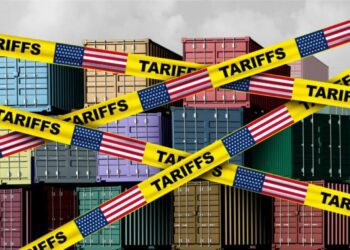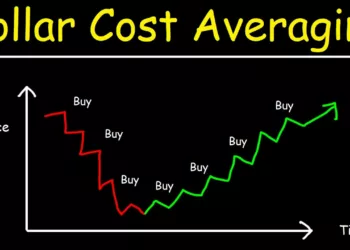The price-to-earnings ratio is one of the most widely used and insightful metrics for determining stock valuation. By comparing a company’s share price to its per-share earnings, investors gain perspective on whether the stock is overvalued or undervalued and make better informed investment decisions. However, properly using P/E ratios requires an understanding of the different variations, their appropriate applications, and the overall context of the company’s financial state.
What is the P/E Ratio and Why Does it Matter?
The P/E ratio is calculated by dividing a company’s current stock price per share by its earnings per share (EPS) over a 12-month period. For example:
Company A:
- Share Price: $50
- EPS: $5
- P/E Ratio = $50 / $5 = 10x
A higher P/E ratio indicates investors expect higher future growth and are willing to pay more for each dollar of earnings. A lower ratio suggests the stock is potentially undervalued or has weaker growth prospects.
The S&P 500 average P/E ratio ranges from 15x to 25x depending on market conditions. Individual companies can vary significantly based on industry, growth outlook, and investor sentiment.
Understanding valuation is critical to investments. Overpaying for growth sets investors up for lower future returns. However, ultra-low P/E stocks can be value traps if the business is distressed. Evaluating the reasoning behind a stock’s P/E ratio is key.
Comparing Trailing and Forward P/E Ratios
There are two primary P/E ratio variations investors should understand – trailing and forward P/E:
Trailing P/E
- Uses the past 12 months of as-reported EPS
- Less susceptible to analyst estimate errors
- Provides view of current valuation
Forward P/E
- Relies on analyst estimates for next 12 months of EPS
- More speculative but incorporates expected growth
- Provides view of future valuation
Consider Company B with the following stats:
Company B:
- Trailing EPS: $5
- Estimated Forward EPS: $6
- Share Price: $50
The trailing P/E would be 10 ($50/$5) while the forward P/E is 8.3 ($50/$6). The lower forward P/E signals potential undervaluation based on anticipated growth. However, if those estimates prove aggressive, the stock may be overpriced.
Analyzing trailing versus forward P/E trends over time provides perspective on how a company’s earnings growth is changing expectations.
Robert Shiller’s Cyclically Adjusted P/E Ratio
Economist Robert Shiller’s cyclically adjusted P/E ratio (CAPE) uses an average of the past 10 years of earnings to smooth out business cycle effects on valuation. CAPE provides a more stable view of long-term trends.
For example, the S&P 500 CAPE reached an extreme peak of 44x in late 1999 during the dot-com bubble. It has since reverted to around 30x today versus a historical average of 16x [1]. The current high CAPE indicates stocks are overvalued from a long-term perspective.
S&P 500 CAPE Ratio:
- 1999 Peak: 44x
- Current: 30x
- Historical Avg: 16x
Shiller’s CAPE ratio provides important historical context missing from standard P/E ratios. It helps identify market bubbles and future return expectations.
Let’s elucidate these concepts with an illustrative example:
| Company | Forward P/E Ratio | Trailing P/E Ratio | Shiller P/E Ratio |
|---|---|---|---|
| XYZ Inc. | 15.5 | 18.2 | 22.7 |
| ABC Corporation | 12.8 | 14.5 | 20.1 |
In this example, we witness how different versions of the P/E ratio yield distinct perspectives on the valuation of two companies, underscoring the importance of selecting the right metric for the situation.
When Low P/E Multiples Can Be a Warning Sign
It’s appealing to find stocks with very low P/E ratios, signaling they are potentially undervalued. However, investors should dig deeper into why a company has such a low multiple. It may indicate a deteriorating financial position.
For example, take Company C:
Company C:
- Share Price: $50
- Earnings: $5
- P/E Ratio: 10x
A P/E of 10x signals undervaluation compared to the market. However, if earnings collapse to $1 next year, the P/E would shoot up to 50x indicating severe overvaluation.
Falling earnings can invalidate the relevance of low P/E ratios. Understanding the earnings power of a business is crucial to interpreting valuation.
High P/E Multiples Can Signal Strong Growth Potential
On the other hand, high P/E ratios aren’t necessarily a sign of overvaluation. Hyper-growth companies like tech stocks often have elevated P/E ratios. Investors are betting on massive expansion of future earnings.
For example, Company D has much higher earnings growth than Company E:
Company D:
- Earnings: $1
- Growth Rate: 50%
- P/E Ratio: 50x
Company E:
- Earnings: $5
- Growth Rate: 2%
- P/E Ratio: 10x
Company D’s high P/E is justified by its strong growth. Valuing them equally would underestimate future profit potential. However, growth expectations could still be too optimistic. High multiples come with risks.
Using P/E Ratios in Context as Part of Holistic Analysis
The P/E ratio has limitations as a standalone valuation method. It provides a useful starting point, but many other factors determine a business’ intrinsic value. These include:
- Capital structure and debt levels
- Management track record
- Industry trends
- Competitive advantages
- Brand strength
Investors should use P/E ratios in conjunction with other financial metrics, qualitative aspects, and a forward-looking thesis. Anchoring decisions on any single ratio can lead to mistakes. The P/E is just one piece of the puzzle.
Long-Term vs. Short-Term Perspective: Finding Your Investment Horizon
The investment horizon is a pivotal factor. For long-term investors, a higher P/E ratio might be acceptable if supported by robust growth prospects. Short-term traders, conversely, may seek opportunities in stocks with lower P/E ratios, aiming for quicker turnarounds.
Sector Analysis: Unearthing Industry Dynamics
Different sectors exhibit distinct P/E ratio dynamics. Technology companies often boast higher P/E ratios due to their potential for rapid growth, while utility companies tend to have lower ratios due to their stable, predictable earnings. Tailoring your analysis to the sector can offer valuable insights.
Risk Tolerance: Balancing Caution and Ambition
Risk appetite varies among investors. Those seeking stability may gravitate towards stocks with lower P/E ratios, prioritizing safety over potential returns. Conversely, risk-tolerant individuals might be more inclined to embrace higher P/E ratios, recognizing the associated potential for substantial gains.
Debunking Common Misconceptions
In the realm of finance, misconceptions about the P/E ratio abound. One prevalent fallacy is equating a high P/E ratio with overvaluation, without considering the company’s growth potential or the industry context. It’s essential to view this metric in conjunction with other financial indicators for a comprehensive assessment.
Another common misunderstanding is assuming that a low P/E ratio is always indicative of a bargain. While it can indeed signal potential value, it could also imply a struggling company facing uncertain prospects. Conducting thorough research and analysis is paramount to distinguishing between undervaluation and a value trap.

Lessons from the Past: When P/E Ratios Misled
History serves as a powerful teacher, and in the world of investing, it offers cautionary tales of times when relying solely on the P/E ratio proved to be a costly mistake. One of the most notable instances is the dot-com bubble of the late 1990s. During this period, many technology companies sported astronomical P/E ratios, fueled by speculative fervor. However, when the bubble burst, investors were met with significant losses, highlighting the importance of a balanced approach to valuation.
P/E Ratio in the Digital Age: A Paradigm Shift
In today’s technology-driven stock market, the interpretation of P/E ratios has undergone a notable transformation. Traditional metrics may not always apply to high-growth, innovative companies that prioritize market share over immediate profitability. Investors must adapt their analysis methods to suit the nuances of this new era. For instance, metrics like user acquisition costs and customer lifetime value may take precedence over traditional earnings measures for certain tech startups.
The Takeaway: Use P/E Ratios Thoughtfully and With Perspective
For experienced investors, properly using P/E ratios requires nuance. Different variations, growth trajectories, and market conditions substantially impact interpretation. Establishing rigid over/under-valuation cutoffs can backfire. Instead, thoughtful analysis of ratios in proper context drives informed decisions. When used and understood thoroughly, P/E multiples remain indispensable valuation tools.
For more perspectives, see The Power of Dividend Investing and Trade with News.
References
- Multpl.com S&P 500 PE Ratio by Year https://www.multpl.com/s-p-500-pe-ratio
Disclaimer: This article is for informational purposes only and does not constitute financial advice. Always conduct your own research and consult with a qualified financial advisor before making investment decisions.
















































